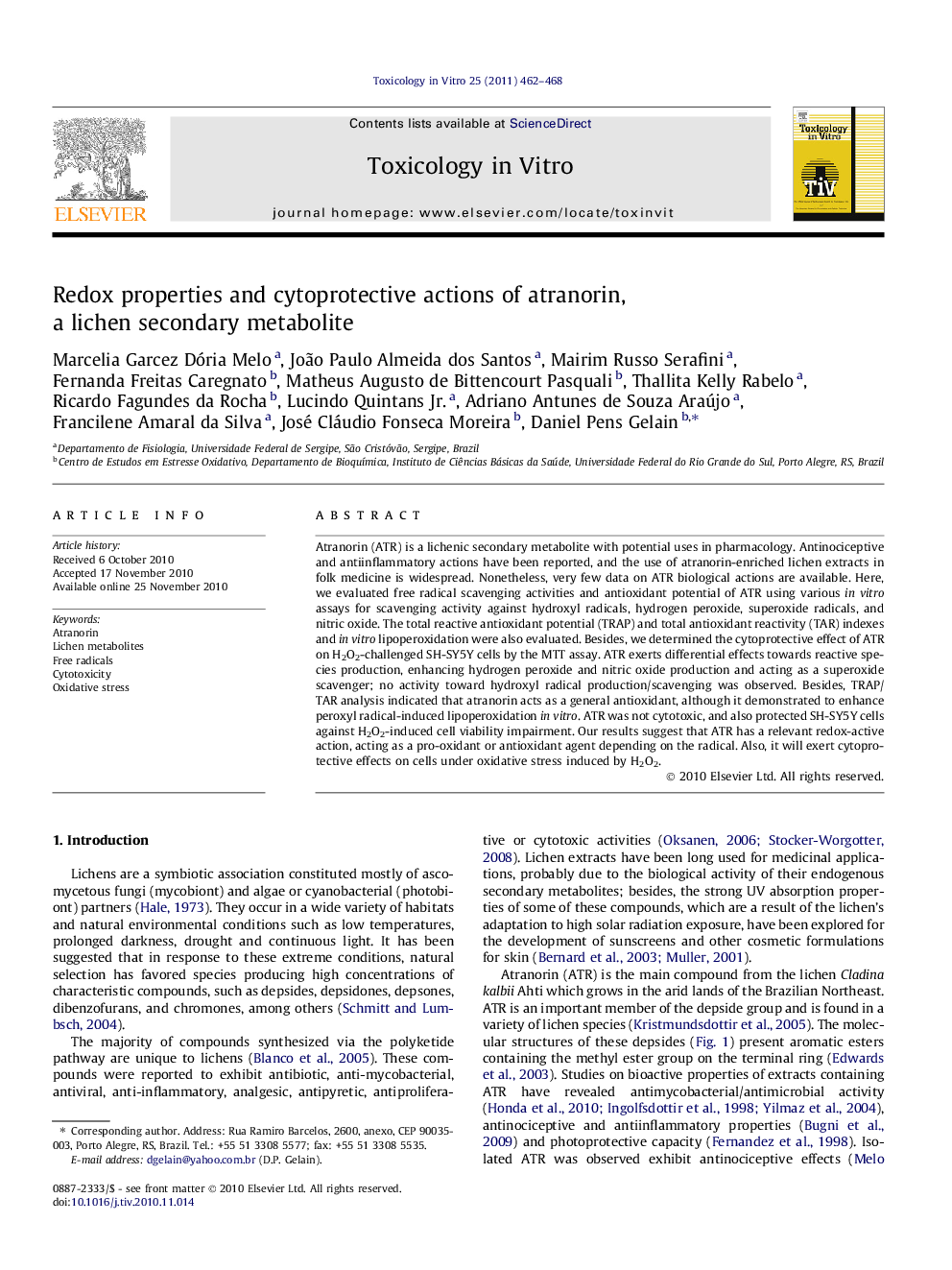| Article ID | Journal | Published Year | Pages | File Type |
|---|---|---|---|---|
| 5863104 | Toxicology in Vitro | 2011 | 7 Pages |
Abstract
Atranorin (ATR) is a lichenic secondary metabolite with potential uses in pharmacology. Antinociceptive and antiinflammatory actions have been reported, and the use of atranorin-enriched lichen extracts in folk medicine is widespread. Nonetheless, very few data on ATR biological actions are available. Here, we evaluated free radical scavenging activities and antioxidant potential of ATR using various in vitro assays for scavenging activity against hydroxyl radicals, hydrogen peroxide, superoxide radicals, and nitric oxide. The total reactive antioxidant potential (TRAP) and total antioxidant reactivity (TAR) indexes and in vitro lipoperoxidation were also evaluated. Besides, we determined the cytoprotective effect of ATR on H2O2-challenged SH-SY5Y cells by the MTT assay. ATR exerts differential effects towards reactive species production, enhancing hydrogen peroxide and nitric oxide production and acting as a superoxide scavenger; no activity toward hydroxyl radical production/scavenging was observed. Besides, TRAP/TAR analysis indicated that atranorin acts as a general antioxidant, although it demonstrated to enhance peroxyl radical-induced lipoperoxidation in vitro. ATR was not cytotoxic, and also protected SH-SY5Y cells against H2O2-induced cell viability impairment. Our results suggest that ATR has a relevant redox-active action, acting as a pro-oxidant or antioxidant agent depending on the radical. Also, it will exert cytoprotective effects on cells under oxidative stress induced by H2O2.
Related Topics
Life Sciences
Environmental Science
Health, Toxicology and Mutagenesis
Authors
Marcelia Garcez Dória Melo, João Paulo Almeida dos Santos, Mairim Russo Serafini, Fernanda Freitas Caregnato, Matheus Augusto de Bittencourt Pasquali, Thallita Kelly Rabelo, Ricardo Fagundes da Rocha, Lucindo Jr., Adriano Antunes de Souza Araújo,
